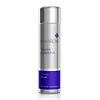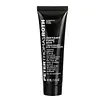What's inside
What's inside
 Key Ingredients
Key Ingredients

 Benefits
Benefits

 Concerns
Concerns

 Ingredients Side-by-side
Ingredients Side-by-side

Water
Skin ConditioningGlycerin
HumectantPEG-40 Hydrogenated Castor Oil
EmulsifyingPentaerythrityl Tetraisostearate
EmollientPanthenol
Skin ConditioningC12-15 Alkyl Benzoate
AntimicrobialButylene Glycol
HumectantPalmitoyl Oligopeptide
CleansingPalmitoyl Tetrapeptide-7
Skin ConditioningAcetyl Hexapeptide-8
HumectantTribehenin
EmollientCeramide Ng
Skin ConditioningPEG-10 Phytosterol
EmulsifyingPalmitoyl Hexapeptide-12
Skin ConditioningTocopheryl Acetate
AntioxidantAcrylates/C10-30 Alkyl Acrylate Crosspolymer
Emulsion StabilisingAscorbyl Tetraisopalmitate
AntioxidantDisodium EDTA
Helianthus Annuus Seed Oil
EmollientRosmarinus Officinalis Leaf Extract
AntimicrobialGlycine Soja Oil
EmollientRetinyl Palmitate
Skin ConditioningTocopherol
AntioxidantCarbomer
Emulsion StabilisingPolysorbate 20
EmulsifyingCaprylyl Glycol
EmollientPhenoxyethanol
PreservativeEthylhexylglycerin
Skin ConditioningPolyglyceryl-10 Laurate
Skin ConditioningMethylparaben
PreservativeSodium Hydroxide
BufferingPropylparaben
PreservativeLactic Acid
BufferingWater, Glycerin, PEG-40 Hydrogenated Castor Oil, Pentaerythrityl Tetraisostearate, Panthenol, C12-15 Alkyl Benzoate, Butylene Glycol, Palmitoyl Oligopeptide, Palmitoyl Tetrapeptide-7, Acetyl Hexapeptide-8, Tribehenin, Ceramide Ng, PEG-10 Phytosterol, Palmitoyl Hexapeptide-12, Tocopheryl Acetate, Acrylates/C10-30 Alkyl Acrylate Crosspolymer, Ascorbyl Tetraisopalmitate, Disodium EDTA, Helianthus Annuus Seed Oil, Rosmarinus Officinalis Leaf Extract, Glycine Soja Oil, Retinyl Palmitate, Tocopherol, Carbomer, Polysorbate 20, Caprylyl Glycol, Phenoxyethanol, Ethylhexylglycerin, Polyglyceryl-10 Laurate, Methylparaben, Sodium Hydroxide, Propylparaben, Lactic Acid
Water
Skin ConditioningGlycerin
HumectantButylene Glycol
HumectantSodium Silicate
BufferingMagnesium Aluminum Silicate
AbsorbentSodium Magnesium Fluorosilicate
AbrasivePalmitoyl Tetrapeptide-7
Skin ConditioningDipeptide-2
Skin ConditioningAscorbic Acid
AntioxidantTocopheryl Acetate
AntioxidantHesperidin Methyl Chalcone
AntioxidantRetinyl Palmitate
Skin ConditioningPanthenol
Skin ConditioningFoeniculum Vulgare Seed Extract
Skin ConditioningMedicago Sativa Seed Extract
Skin ConditioningCarrageenan
Argania Spinosa Kernel Extract
Skin ConditioningPEG-8 Dimethicone
EmulsifyingSilica
AbrasiveOctyldodecanol
EmollientSymphytum Officinale Leaf Extract
Skin ConditioningSodium Propoxyhydroxypropyl Thiosulfate Silica
BHT
AntioxidantDisodium EDTA
Hydrolyzed Lupine Protein
Skin ConditioningSteareth-20
CleansingSodium Cocoyl Glutamate
CleansingCarbomer
Emulsion StabilisingChlorhexidine Digluconate
AntimicrobialEthylhexylglycerin
Skin ConditioningPotassium Sorbate
PreservativeCitric Acid
BufferingSodium Citrate
BufferingSodium Benzoate
MaskingPhenoxyethanol
PreservativeWater, Glycerin, Butylene Glycol, Sodium Silicate, Magnesium Aluminum Silicate, Sodium Magnesium Fluorosilicate, Palmitoyl Tetrapeptide-7, Dipeptide-2, Ascorbic Acid, Tocopheryl Acetate, Hesperidin Methyl Chalcone, Retinyl Palmitate, Panthenol, Foeniculum Vulgare Seed Extract, Medicago Sativa Seed Extract, Carrageenan, Argania Spinosa Kernel Extract, PEG-8 Dimethicone, Silica, Octyldodecanol, Symphytum Officinale Leaf Extract, Sodium Propoxyhydroxypropyl Thiosulfate Silica, BHT, Disodium EDTA, Hydrolyzed Lupine Protein, Steareth-20, Sodium Cocoyl Glutamate, Carbomer, Chlorhexidine Digluconate, Ethylhexylglycerin, Potassium Sorbate, Citric Acid, Sodium Citrate, Sodium Benzoate, Phenoxyethanol
Ingredients Explained
These ingredients are found in both products.
Ingredients higher up in an ingredient list are typically present in a larger amount.
Butylene Glycol (or BG) is used within cosmetic products for a few different reasons:
Overall, Butylene Glycol is a safe and well-rounded ingredient that works well with other ingredients.
Though this ingredient works well with most skin types, some people with sensitive skin may experience a reaction such as allergic rashes, closed comedones, or itchiness.
Learn more about Butylene GlycolCarbomer is a polymer of acrylic acid. Its main role is to create a gel consistency.
A high amount of carbomer can cause pilling or balling up of products. Don't worry, most products contain 1% or less of carbomer.
Disodium EDTA plays a role in making products more stable by aiding other preservatives.
It is a chelating agent, meaning it neutralizes metal ions that may be found in a product.
Disodium EDTA is a salt of edetic acid and is found to be safe in cosmetic ingredients.
Learn more about Disodium EDTAEthylhexylglycerin (we can't pronounce this either) is commonly used as a preservative and skin softener. It is derived from glyceryl.
You might see Ethylhexylglycerin often paired with other preservatives such as phenoxyethanol. Ethylhexylglycerin has been found to increase the effectiveness of these other preservatives.
Glycerin is already naturally found in your skin. It helps moisturize and protect your skin.
A study from 2016 found glycerin to be more effective as a humectant than AHAs and hyaluronic acid.
As a humectant, it helps the skin stay hydrated by pulling moisture to your skin. The low molecular weight of glycerin allows it to pull moisture into the deeper layers of your skin.
Hydrated skin improves your skin barrier; Your skin barrier helps protect against irritants and bacteria.
Glycerin has also been found to have antimicrobial and antiviral properties. Due to these properties, glycerin is often used in wound and burn treatments.
In cosmetics, glycerin is usually derived from plants such as soybean or palm. However, it can also be sourced from animals, such as tallow or animal fat.
This ingredient is organic, colorless, odorless, and non-toxic.
Glycerin is the name for this ingredient in American English. British English uses Glycerol/Glycerine.
Learn more about GlycerinPalmitoyl Tetrapeptide-7 (formerly Palmitoyl Tetrapeptide-3) is a lab-made peptide with anti-inflammatory and skin-repairing benefits. It's made up of four amino acids (glycine, glutamine, proline, and arginine) and palmitic acid (which helps it penetrate skin more effectively).
This ingredient helps reduce inflammation by limiting the production of interleukin-6 (IL-6), a chemical that triggers inflammatory responses, particularly after UV exposure.
Less inflammation = slower collagen breakdown and a longer-lasting, youthful appearance.
Palmitoyl Tetrapeptide-7 also stimulates collagen production and supports a healthier skin barrier.
Over time, this can improve skin firmness, hydration, and reduce the appearance of fine lines. It’s commonly paired with Palmitoyl Tripeptide-1 in the well-known Matrixyl 3000 complex for enhanced anti-aging effects.
This ingredient has been shown to be effective and safe in cosmetic use and you'll typically find it in small amounts (less than 0.01%).
Due to its palmitic acid base, it may not be safe for Malassezia folliculitis.
Read more about other common types of peptides here:
Learn more about Palmitoyl Tetrapeptide-7Panthenol is a common ingredient that helps hydrate and soothe the skin. It is found naturally in our skin and hair.
There are two forms of panthenol: D and L.
D-panthenol is also known as dexpanthenol. Most cosmetics use dexpanthenol or a mixture of D and L-panthenol.
Panthenol is famous due to its ability to go deeper into the skin's layers. Using this ingredient has numerous pros (and no cons):
Like hyaluronic acid, panthenol is a humectant. Humectants are able to bind and hold large amounts of water to keep skin hydrated.
This ingredient works well for wound healing. It works by increasing tissue in the wound and helps close open wounds.
Once oxidized, panthenol converts to pantothenic acid. Panthothenic acid is found in all living cells.
This ingredient is also referred to as pro-vitamin B5.
Learn more about PanthenolPhenoxyethanol is a preservative that has germicide, antimicrobial, and aromatic properties. Studies show that phenoxyethanol can prevent microbial growth. By itself, it has a scent that is similar to that of a rose.
It's often used in formulations along with Caprylyl Glycol to preserve the shelf life of products.
Retinyl palmitate is a form of retinoid. Retinoids are the superstar class of anti-aging ingredients that include tretinoin and retinol.
This particular ingredient has had a bumpy year with its rise and fall in popularity.
First, Retinyl palmitate is created from palmitic acid and retinol. It is a retinol ester and considered one of the weaker forms of retinoid.
This is because all retinoids have to be converted to Tretinoin, AKA retinoic acid. Retinyl Palmitate is pretty far down the line and has to go through multiple conversions before its effects are seen.
Due to this long and ineffective conversion line, the benefits of Retinyl Palmitate are debated.
Studies show Retinyl Palmitate to help:
Dermatologists say this ingredient is ineffective because it isn't used in high enough concentrations in cosmetics.
This ingredient used to be found in sunscreens to boost the efficacy of sunscreen filters.
The downfall of Retinyl Palmitate was due to released reports about the ingredient being correlated to sun damage and skin tumors.
While there is a study showing this ingredient to cause DNA damage when exposed to UV-A, there is no concrete proof of it being linked to skin cancer. It is safe to use when used correctly.
All retinoids increase your skin's sensitivity to the sun in the first few months of usage. Be especially careful with reapplying sunscreen when using any form of retinoid.
Currently, this ingredient is still allowed in cosmetics all over the world. In Canada, cosmetics must have a warning label stating the product to contain Retinyl Palmitate
Fun fact: This ingredient is often added to low-fat milk to increase the levels of Vitamin A.
Learn more about Retinyl PalmitateTocopheryl Acetate is AKA Vitamin E. It is an antioxidant and protects your skin from free radicals. Free radicals damage the skin by breaking down collagen.
One study found using Tocopheryl Acetate with Vitamin C decreased the number of sunburned cells.
Tocopheryl Acetate is commonly found in both skincare and dietary supplements.
Learn more about Tocopheryl AcetateWater. It's the most common cosmetic ingredient of all. You'll usually see it at the top of ingredient lists, meaning that it makes up the largest part of the product.
So why is it so popular? Water most often acts as a solvent - this means that it helps dissolve other ingredients into the formulation.
You'll also recognize water as that liquid we all need to stay alive. If you see this, drink a glass of water. Stay hydrated!
Learn more about Water